Let’s go to deep space with the teams of Pixomondo to discover their work on the Season 3 of Star Trek Discovery:
© Vincent Frei – The Art of VFX – 2021
Let’s go to deep space with the teams of Pixomondo to discover their work on the Season 3 of Star Trek Discovery:
© Vincent Frei – The Art of VFX – 2021
Let’s have a look at the variety of the work made by the teams of Goodbye Kansas Studios on the Netflix series, Behind Her Eyes:
WANT TO KNOW MORE?
Goodbye Kansas Studios: Dedicated page about Behind Her Eyes on Goodbye Kansas Studios website.
Netflix: You can now watch Behind Her Eyes on Netflix.
© Vincent Frei – The Art of VFX – 2021
Get ready for a brand new action-packed trailer for F9!
The VFX are made by:
DNEG (VFX Supervisors: Daniel Rauchwerger & Derek Wentworth)
ILM (VFX Supervisor: Julian Foddy)
Stereo D
Proof
Lola VFX (VFX Supervisor: Jeremiah Sweeney)
Factory VFX
And the graphics work made by:
DNEG
Territory Studio
Blind LTD
The Production VFX Supervisor is Peter Chiang.
Director: Justin Lin
Release Date: 25 June 2021 (USA)
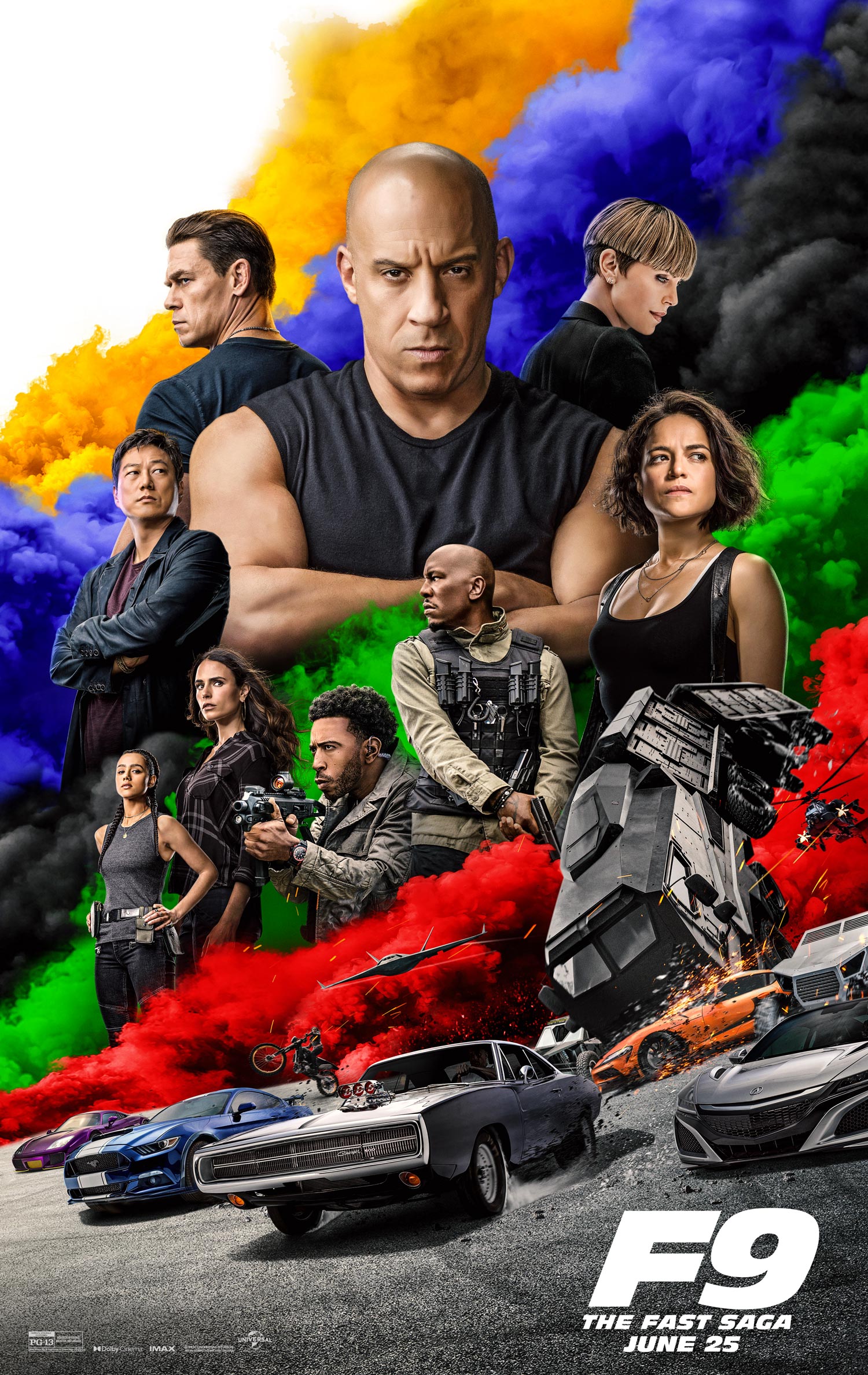
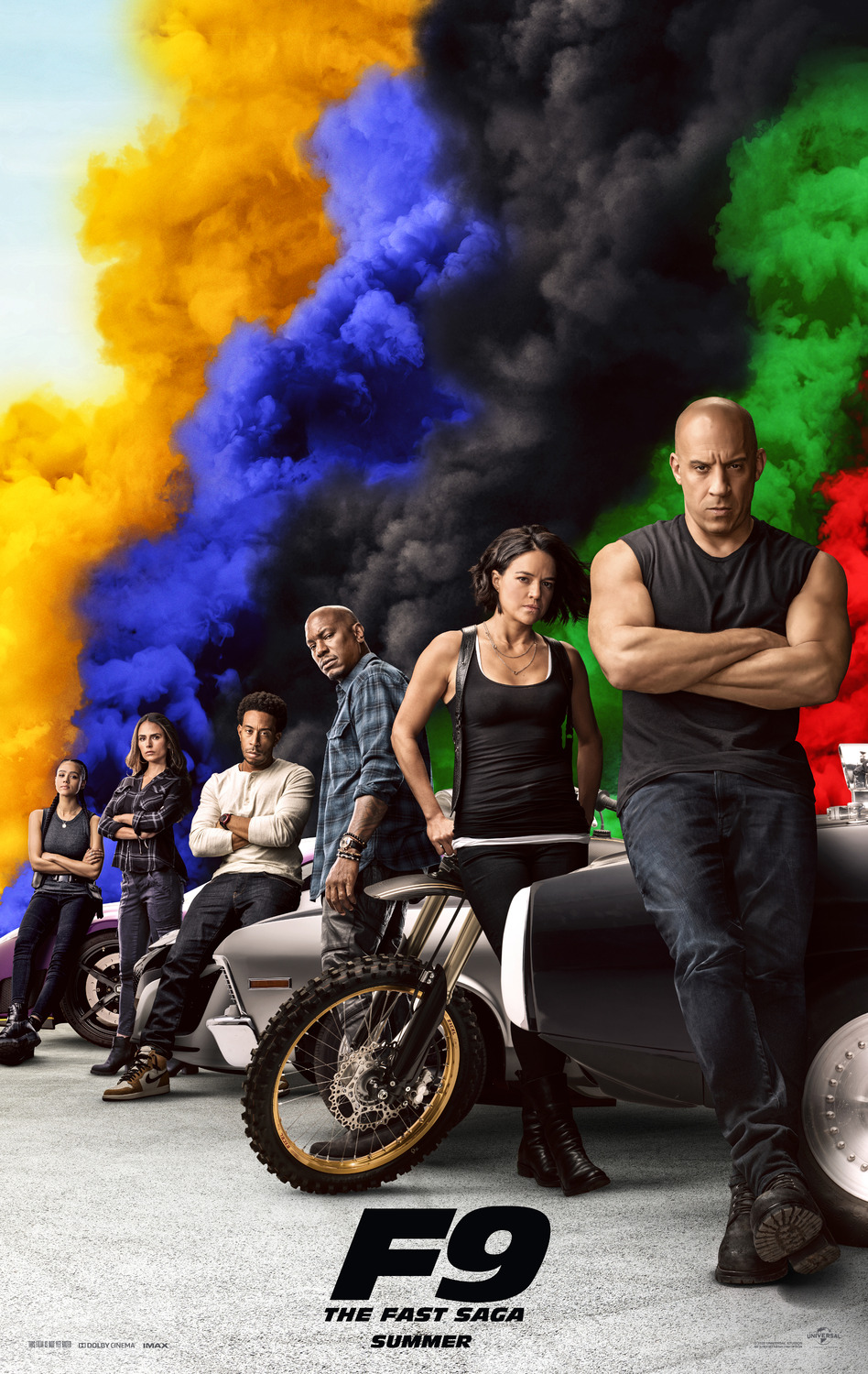

© Vincent Frei – The Art of VFX – 2021
Netflix has released this making of about the creation of The Rip explained by Overall VFX Supervisor Richard Briscoe for the series, The Irregulars:
WANT TO KNOW MORE?
Netflix: You can watch now The Irregulars on Netflix.
© Vincent Frei – The Art of VFX – 2021
Get ready for the epic conclusion of The Falcon and The Winter Soldier!
The VFX are made by:
Cantina Creative
Crafty Apes
Digital Frontier
Industrial Light & Magic
QPPE
Rodeo FX
Sony Pictures Imageworks
Stereo D
Technicolor VFX
Tippett Studio
Trixter
Weta Digital
Director: Kari Skogland
Release Date: March 19, 2021 (Disney+)
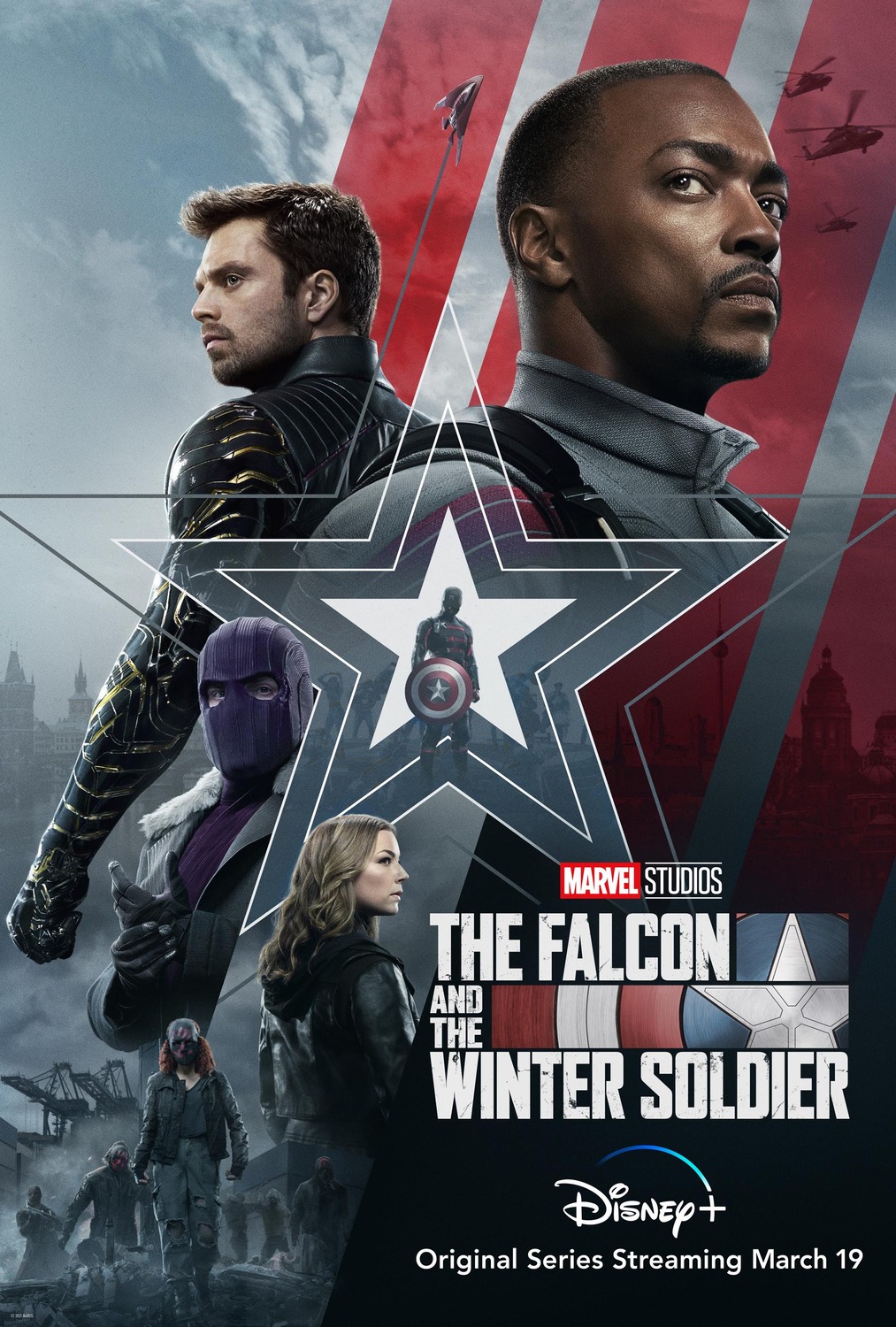

© Vincent Frei – The Art of VFX – 2021
Back in 2013, John “DJ” DesJardin talked to us about his visual effects work on Man of Steel. He went on to work on Batman v Superman: Dawn of Justice and Justice League. He’s back today to talk about the challenges of bringing director Zack Snyder’s vision to life on Zack Snyder’s Justice League.
How was this new collaboration with Director Zack Snyder?
It was actually the continuation of my last collaboration with Zack. We resurrected a lot of VFX work, concepts and themes from our original collaboration on his version of Justice League back in 2016/early 2017.
What was your feeling to be able to finish his vision?
Very emotional. There is a lot of tragic history that led to Zack’s vision being killed. It’s been very cathartic for me personally to help Zack and Debbie Snyder complete this work. Like every other time I’ve worked with them, I was hugely enthusiastic to visualize the story they wanted to tell. And I was heartbroken when our work was cut short. So it’s been satisfying to finally set the cinematic world right again with the realization of Zack’s vision.
This kind of situation is really unique. How did you approach it with your VFX Producer?
Tamara Kent and I approached it as we would any project, laying out a schedule and budget we thought would work. The parameters were a little different, in that there was a certain percentage of the VFX work that had been completed back in early 2017, before that work was thrown out.
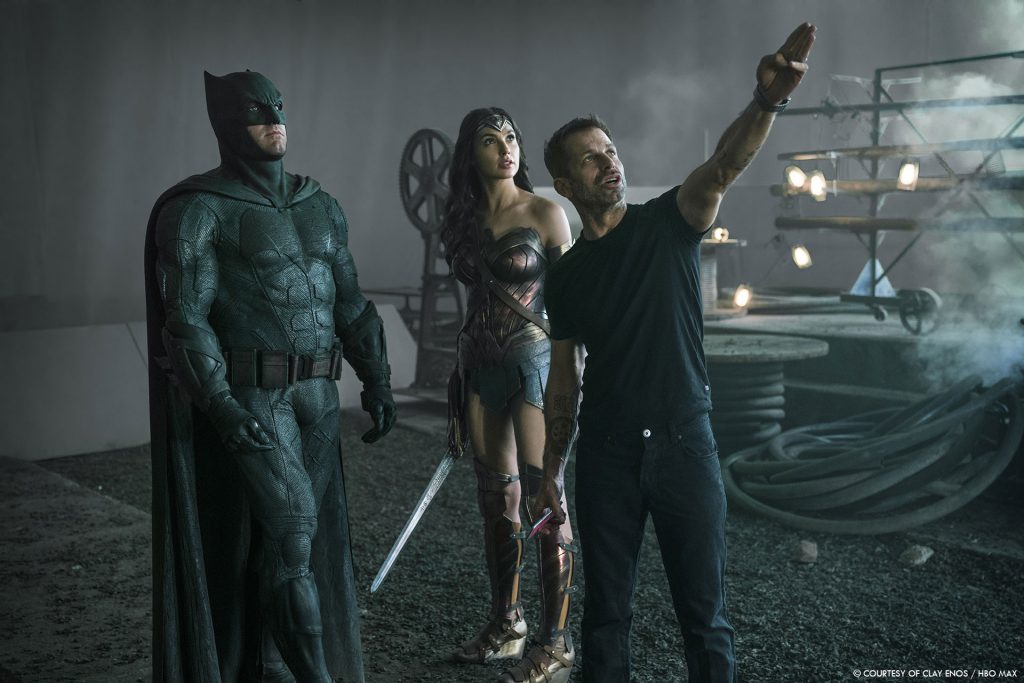
The schedule was short and the amount of work really big. How did you manage it?
The schedule was the first hurdle. Tamara Kent and I budgeted for a schedule that included a 52 week post. We knew that even though there was no photography needed (at the time), the forensics and de-archiving of old shots, old elements and old designs meant we needed the time to really get it going. But the studio demanded it much earlier than that. They gave us half the time to meet their desire to release it in March 2021. So it was a scramble from the start to go through the entire old cut of the film and discover the status of each shot, hoping we’d retain a lot of finals in the process to help offset the large amount of original reimagined work and brand new work in scenes that were deleted and never worked on.
It must be interesting to be able to look back on your work and improve it. Did you do things differently?
Yes. Mainly in terms of going back to original design elements, like the old version of Steppenwolf that was deemed “too scary” by the powers that be at the time. We had to replace the theatrical Steppenwolf with this version which meant a lot of shots went from “Final” to “Un-Final”. The look of the abandoned Russian nuclear facility was completely changed to the old Zack Snyder/Patrick Tatopoulos concept which was a more menacing cloudy day/midnight cloudy-moonlit-night look. More dramatic. We needed to put back scenes with Darkseid in Apokolips along with conversations between Steppenwolf and Desaad in Step’s lair. Lots more character animation work. And then there’s the whole original structure of the 3rd Act fight. So, lots of old stuff had to be restored but with the high level of detail Zack always (rightfully) demands of us.
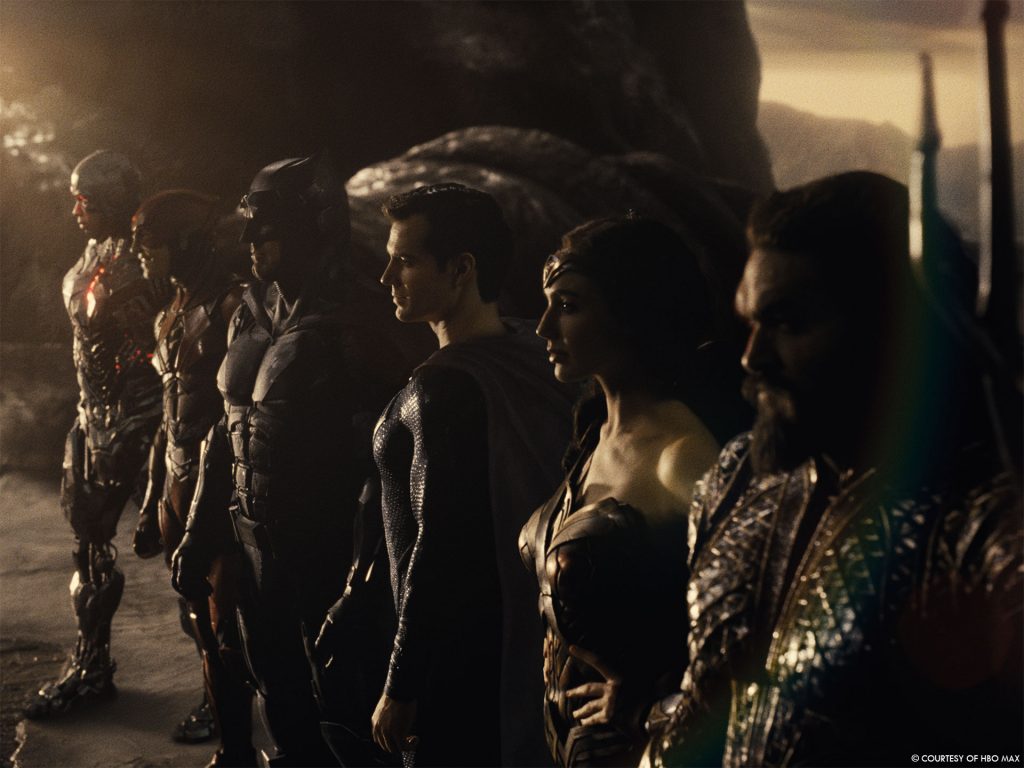
How does the 1.33 aspect affects your work?
It affected it a LOT. Because Zack always wanted that to be his final aspect ratio. But during our forensics exploration we discovered that there was an early compromise to 1.42 and then later all the way down to 1.85, which was the final aspect ratio of the theatrical version. So almost nothing was finaled at the desired aspect ratio. But we discovered that some shots had earlier versions at the correct aspect ratio before cutting it to 1.85, or a lot — Weta finals being a good example — that were 1.42 and could easily be made to be 1.33 with a little file stretching or artistic cropping so we didn’t have to re-render and composite every shot to fit the 1.33. And then, of course, there were a lot of shots that did need to be regenerated, either by using available cached and archived data or by actually re-rendering from scratch. That was a last resort, as we were trying not to redo old work that was close to final. We were trying to reserve the most work for the stuff that was farthest from being done first time around. But there were a lot of overlapping types, which is what made this easily the most difficult film we’ve collectively ever done.
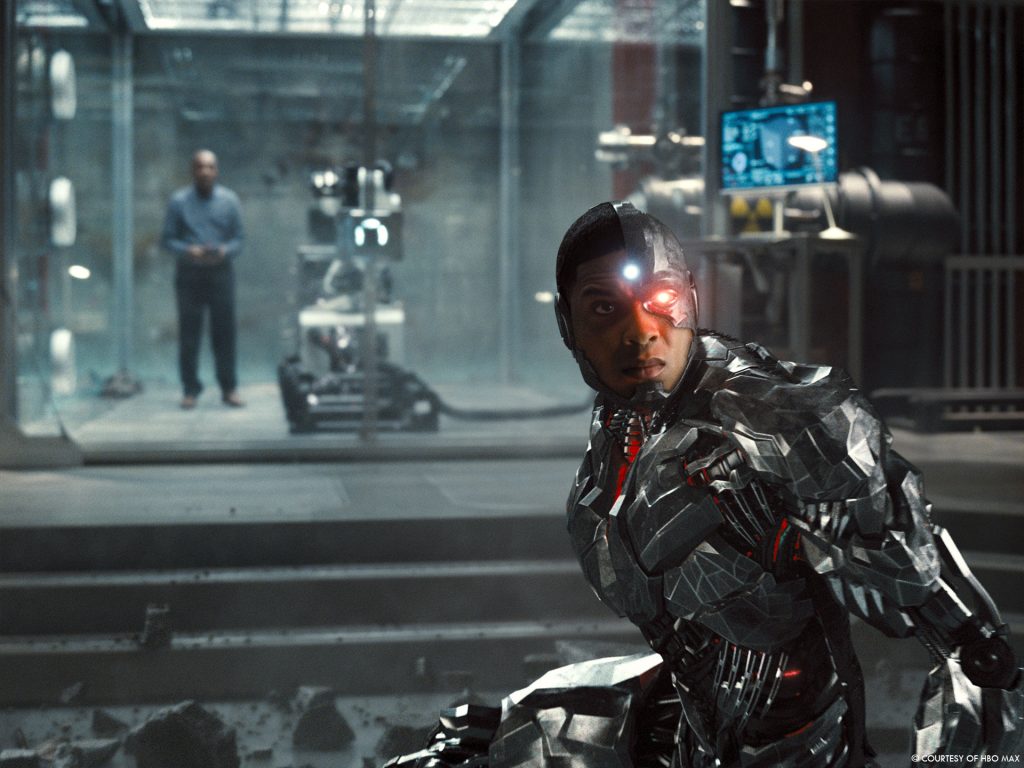
How did you split the new work amongst the original vendors and the new ones?
The original big set pieces were handled by Weta, Scanline VFX, DNEG and MPC. We had just wrapped work on Godzilla Vs Kong with Weta and Scanline so as we wound down on that show, those teams started de-archiving as much as they could from their original run on JL. MPC worked on JL, but unfortunately nearly all of their work ended up being for the divergent design and story of the theatrical version, which is quite different from Zack’s original version.
So Tamara and I made the decision to split the work in Pozharnov between Weta and Scanline: Weta would handle all of the interior cooling tower Steppenwolf/Desaad/Darkseid heavy conversational acting scenes and Scanline would handle all of the exterior establishing and heavy 3rd Act action scenes. Bryan Hirota came up with an interesting idea to push the midnight moonlit look (replacing the theatrical “red world” look) into high-iso territory which ended up being a cool way to show off more detail than before. Both facilities handled major 3rd Act fighting.
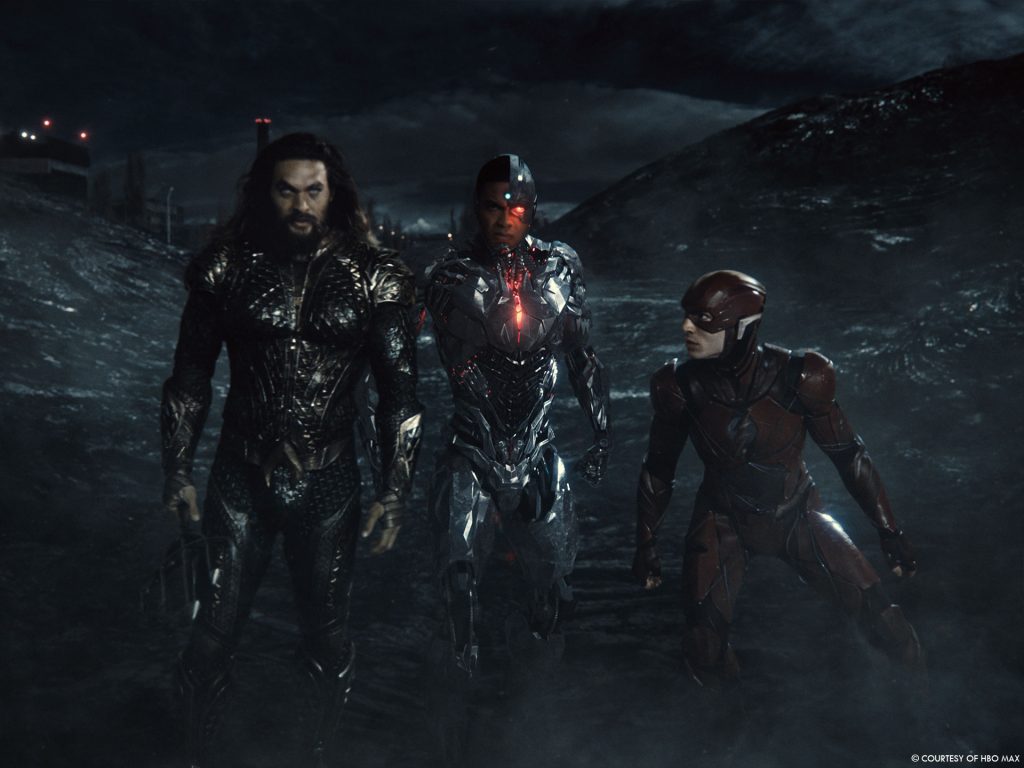
Where you able to work with the same VFX Supervisors as the 2017 version?
Almost. Bryan Hirota was back to complete his work at Scanline (I had also just wrapped Godzilla Vs Kong with them). Tom Proctor at DNEG was on again for a while, but then a project he’d started beforehand needed his full attention. (Alexander Seaman stepped in but then needed to leave — for personal reasons — and was replaced by Mike Stillwell who supervised DNEG’s work through to Final.) Keith Miller was our original supervisor at Weta years ago, but he was deep into other work. We had just completed Godzilla Vs Kong with Kevin Smith at Weta, so we collectively jumped into Justice League together. Kevin brought in Anders Langlands to help supervise plus Simeon Duncombe (animation supervisor), both of whom had worked on the previous version of Zack’s JL.
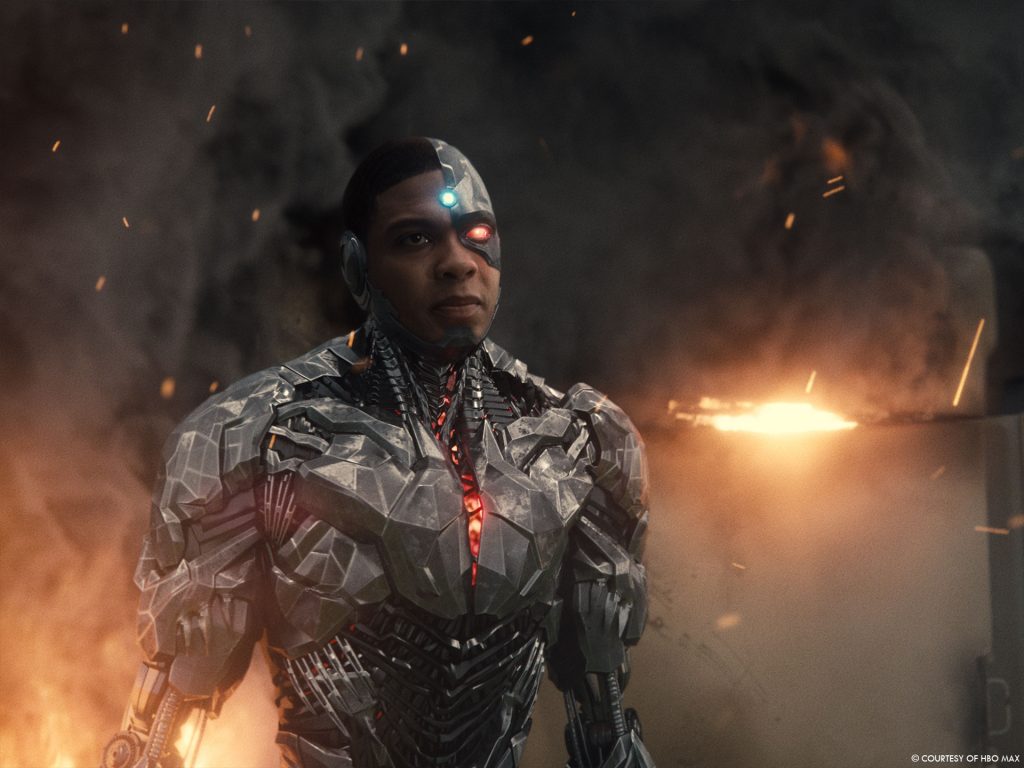
How did you work with them for the restore and unarchive of their assets and shots?
We tried to do a parallel de-archive and resurrection of old shots and assets. From our production side, we did a lot of digging through the original 2017 backup at WB. To be honest, it was not very thorough. We ended up relying heavily on the teams’ local project archives to put the project together. Even MPC chipped in and handed over fundamental geo that provided the basis for the Russia location re-build. But this is the essence of the difficulty of the show, the degree at which each shot was put away between 2016-2017 was unique making each shot difficult to trace forensically.
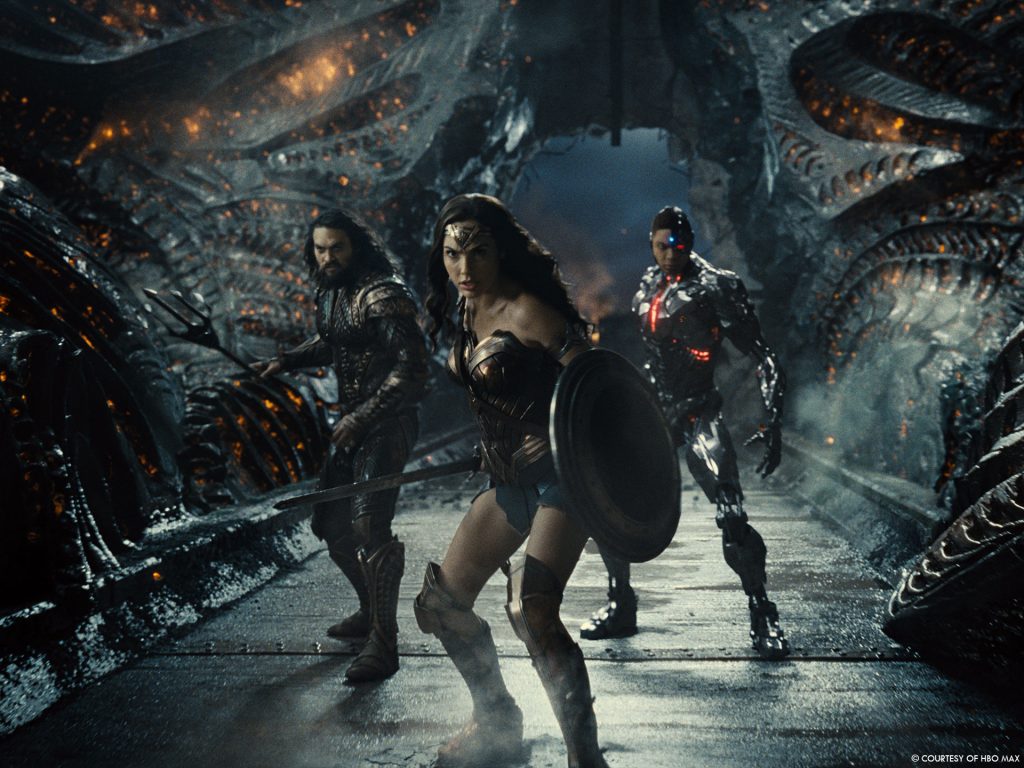
Can you elaborates about the new look of Steppenwolf and also about Darkseid?
The “new look” of Steppenwolf is really the original Patrick Tatopoulos design Zack approved back in 2016 before we originally shot the movie in London. The creative execs at the time deemed him “too scary”, so they whittled away at the alien design until we ended up with the approved theatrical “Army Surplus Viking” look. Darkseid and Desaad were nearly final assets when they were taken out I guess as an attempt to simplify the story. Weta resurrected and completed the original Steppenwolf (complete with his adaptive armor), Darkseid (both the Uxas “young Darkseid” version in the History Lesson and the modern Apokoliptian version) and Desaad. And then we added Granny Goodness to the Apokolips Pantheon.
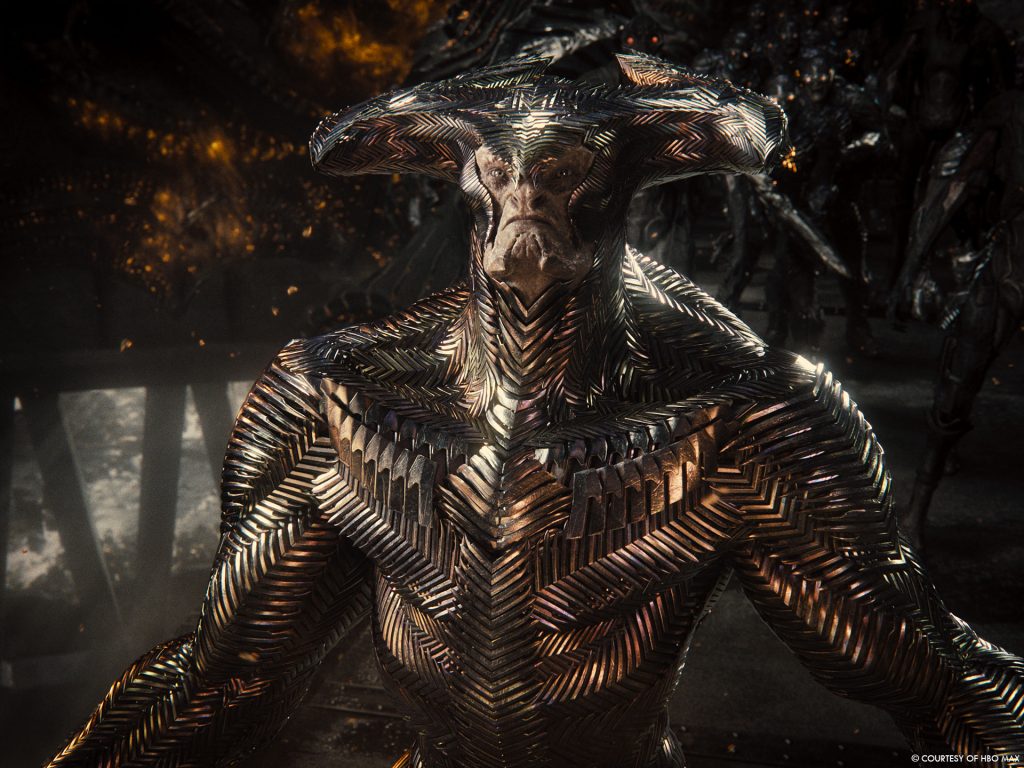
Since 2017, technology has changed. Did you used new techniques for these CG characters and especially for the performance capture?
We had a very established mo-cap/facial capture pipeline set up for the original version of the film. The performances were captured right after initial photography. This time around, I believe we only had the original picture-in-picture video as visual reference for the all-CG characters. Zack fine tuned some of the lines in the conversations which were cut from the 2017 version and never completed. We relied heavily on the animation teams at Weta and Scanline to nail these character performances without the benefit of a new production pipeline to help get them there.
What kind of references did you receive for The Flash slow-motion shots especially the new sequence in the final battle?
There’s a lot of new work involving Flash, some of which was completed before Zack left in 2017. Flash was always a complex character featuring many different combinations of frame rates to show how he’s unstuck in time. All of that work culminated in his final character arc at the end, when he pulls back 6 seconds of time to arrive at the exact moment he needs to be in to transfer his charge to Cyborg and break the Mother Boxes apart. Zack had a very trippy idea for this scene visually which we postvised extensively with MPC but never were allowed to get much into the realm of actual render tests for the final look. Bryan Hirota and I discussed the scene with Zack, detailing how we wanted to build the Flash frame rates and contrast him with the destroyed universe — The Abyss — and subsequent Cosmic Rebirth. Scanline took that old edited postvis and expounded on our basic ideas to push the Big Bang Trippiness Factor to the psychedelic conclusion you see in the film. Weta took the reins as Flash enters the rebuilding cooling tower, taking us all the way to Flash contacting Cyborg in hyper speed, ending inside Cyborg’s virtual world.
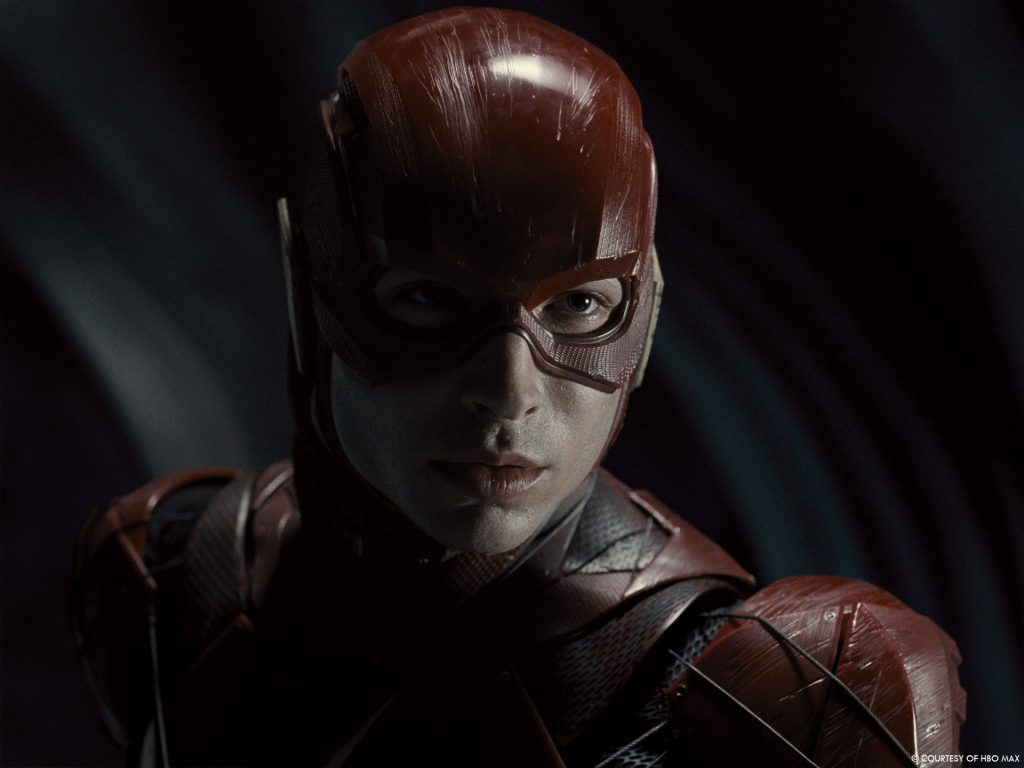
Which new sequences was the most complicate to create and why?
There weren’t any trivial scenes in this movie. Even scenes which partially still existed needed a lot of extra work or in some cases details had changed so much that we had to track for a new (old) continuity. There were also assets that had to be resurrected. All of which is to say, each old/new scene was complicated for various reasons I’ve already stated. Nothing was easy!
What is your favorite shot or sequence?
There’s not any one shot or sequence that is my favorite. I tend to have favorite moments within the sequences. I love this original beginning of the film — Superman’s death at the hands of Doomsday — and the way it reveals these locations you’ve never seen before, setting the stage for the rest of the film. I love Steppenwolf grabbing the reins of the horses and throwing the horses and riders during the Themyscira Battle. I love that Darkseid is the focus of the history lesson. Actually, I just love that the threat of Darkseid and Apokolips hangs over the film as a whole. I’m very happy we got the chance to put those characters back into the story. It’s so much richer for it.
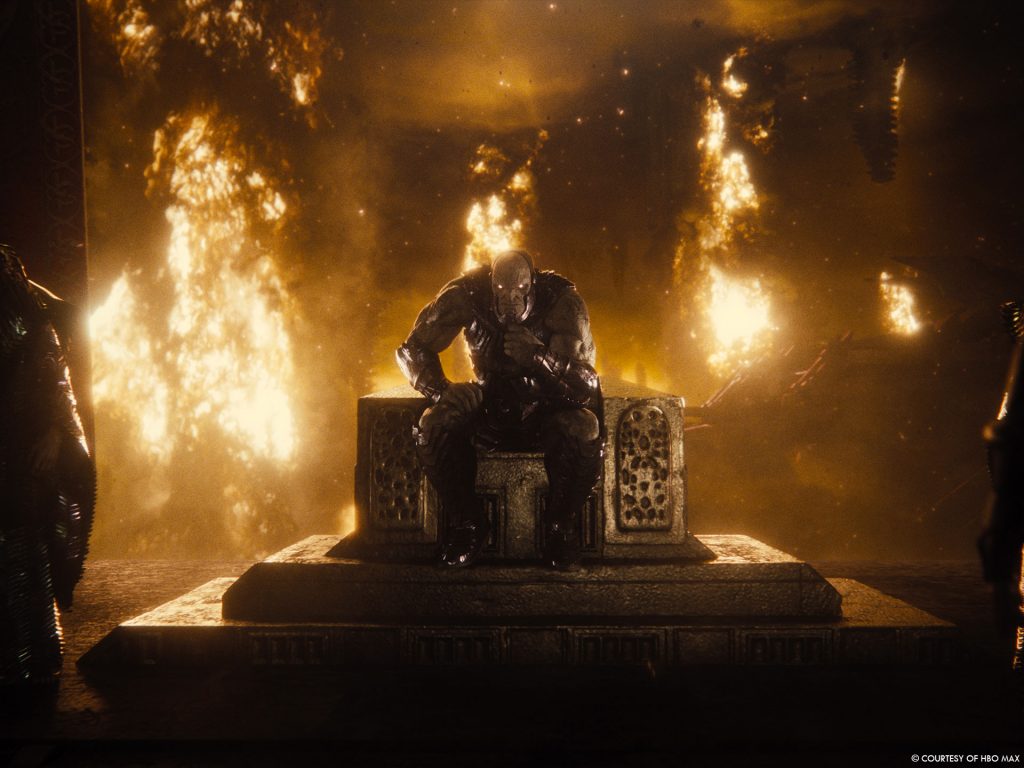
How long have you worked on this show?
One could say I’ve worked on it, off and on, for about 5 years…!
What’s the VFX shots count?
Tamara tells me we completed around 2700 shots in about 7 months.
What was the size of your team?
My VFX team including VFX editorial was about a dozen people.
What is your next project?
I am currently in London prepping to shoot The Flash.
A big thanks for your time.
WANT TO KNOW MORE?
HBO Max: You can watch Zack Snyder’s Justice League on HBO Max now.
© Vincent Frei – The Art of VFX – 2021
Let’s go to Mexico with Justin Theroux and his family in this trailer of The Mosquito Coast:
The VFX are made by:
Zoic Studios
Release Date: April 30, 2021 (Apple TV+)
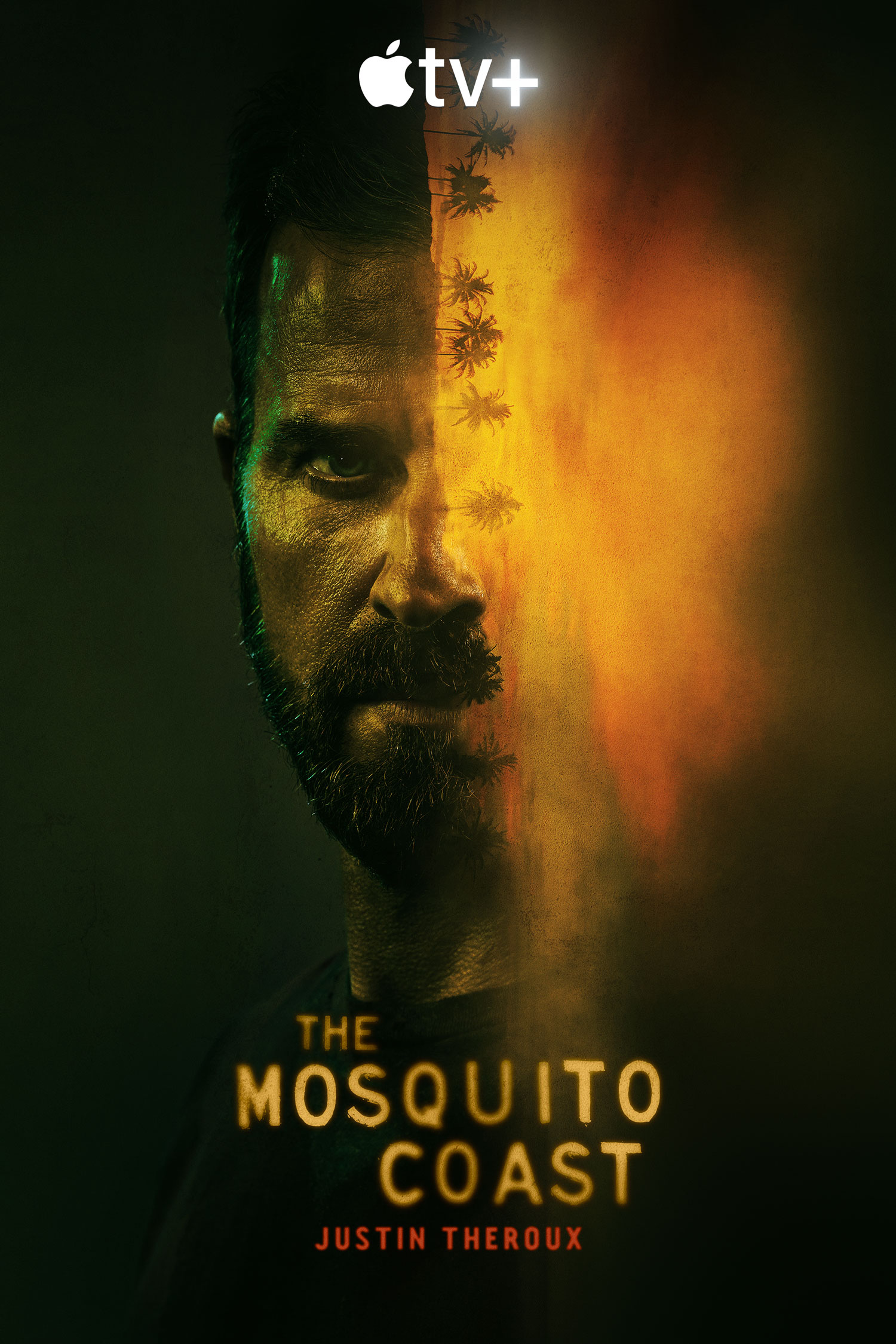
© Vincent Frei – The Art of VFX – 2021
Let’s have a look at how the Framestore team created nearly eight minutes of full CG animation on the Netflix movie, Jingle Jangle:
WANT TO KNOW MORE?
Framestore: Dedicated page about Jingle Jangle on Framestore website.
Netflix: You can now watch Jingle Jangle on Netflix.
© Vincent Frei – The Art of VFX – 2021
The BAFTA have announced the winners for the EE British Academy Film Awards 2021!
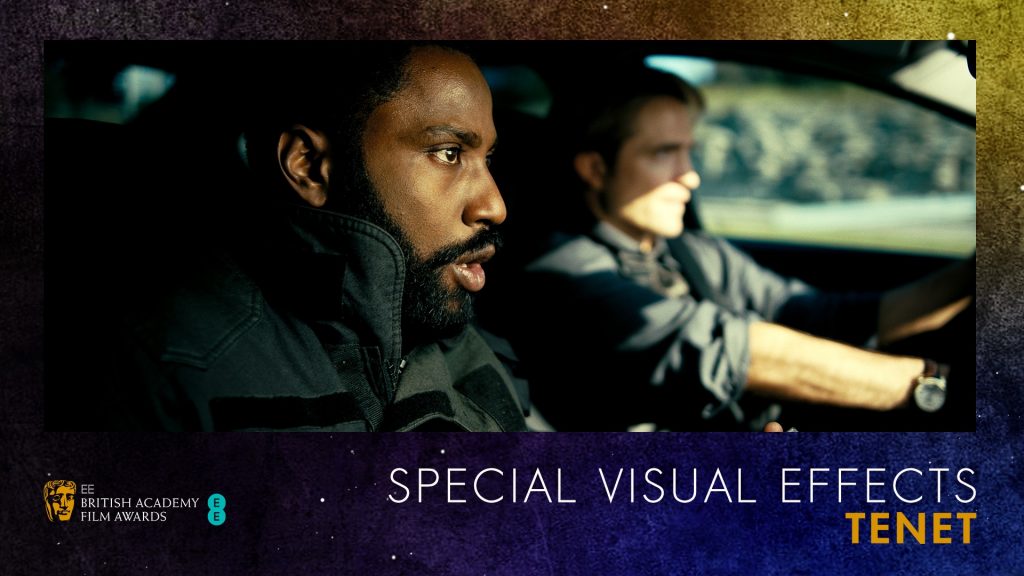
And here is the Winner for Special Visual Effects:
Congratulations to everyone!
You can have a look at the complete list of winners here.
© Vincent Frei – The Art of VFX – 2021
Richard Greenwood has been working in visual effects for over 11 years. He joined FuseFX in 2014 to help launch the Vancouver office. He has worked on a wide range of projects including The Mist, Charmed, The Terror and The Magicians.
What is your background?
I have about 11 years VFX experience that’s split between pipeline, artist, and supervisor work, mostly in TV. FuseFX has played a strong role in my development with opportunities to grow on each project. Despite not going to school for VFX, I have been fortunate to benefit from some degrees in visual arts.
How did you and FuseFX get involved on this series?
We worked closely with the client side VFX, Jay Worth and Curtis Krick, for a number of years on The Magicians. We helped contribute to some of the work in the pilot in early development of Debris and when the show was picked up, we were fortunate to be able to continue that relationship.
How was the collaboration with the showrunners, directors and VFX Supervisors Jay Worth & Curtis Krick?
Jay was instrumental in helping us focus resources on the ship development. The first episode has design motifs that echo through the rest of the series, so it was crucial that we got it right. Most of the day-to-day interactions are with Curtis.
These two supervisors are a dream to work with. I don’t know how to say this without sounding like I’m buttering them up! The truth is that they understand the creative process and include us in shot design and production methodology discussions. They also understand the pressures of the industry and are friendly to work with.
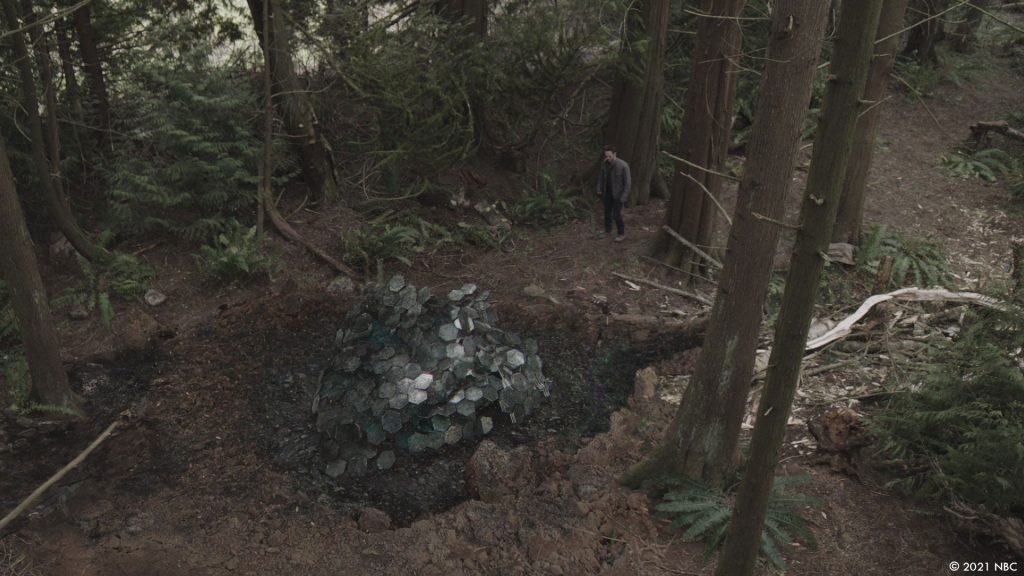
What was his approach and expectations about the visual effects?
Ultimately our goals are unified to help service the story. As much as VFX contributes to the sci-fi genre, Debris is a human-interest story. There are quality expectations for photorealism of course, and the designs and execution must have visual impact.
How did you organize the work with your VFX Producer?
With the pilot and even with episodes, the tight turn-arounds require multiple streams of simultaneous Lookdev in order to deliver. Sometimes we’ll investigate 3D approaches in tandem with 2D or 2.5D solutions. We try to play to our team’s strengths to execute effectively. In many cases, this means trusting in our team’s expertise, giving them autonomy over their tasks and working backwards from our deliverable deadlines to figure out what’s possible within the scope of the shot.
How was the work split amongst the FuseFX offices?
The majority of the work is completed in BC with our Vancouver office with some concept and DMP supported out of our LA office.
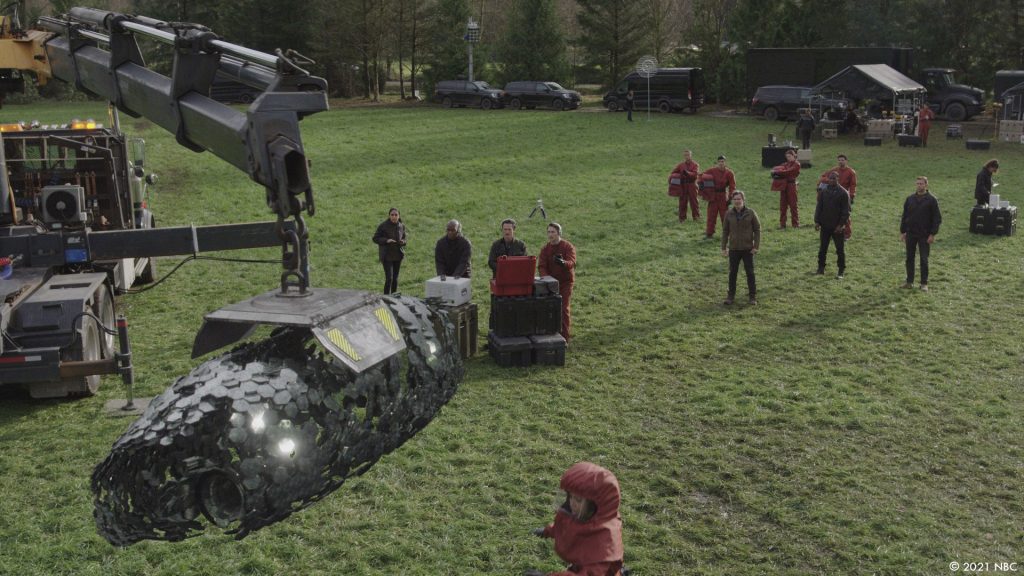
How were the shots filmed where the people were literally flying over the ground?
In reference to the dust devil in the show, these are simpler than you might imagine with two different types of rig removal. The harness in each case did restrict the character’s movement, so we implemented some 2D animations to help them feel less rigid.
Can you explain in detail about your work when the heroes discovered a place where the bodies are spinning around?
We began by creating a clean plate with no characters, and one with characters without rigs. We tracked a 3D camera and match-moved all the characters with generic 3D models. Our FX team could then use the match-move as rough holdouts for the particle simulation.
We modelled some rough geo for grass, dirt and particulate to simulate into the dust devil and iterated through variants of quantity, density, speed and scale. Some of the design is motivated by the camera move and others by continuity. Using deep renders, our comp team layered all the clean plates, roto, FX elements and augmented character animation together.
What were the main challenges with these kinds of shots?
The natural visual chaos of the shot helps integration because it’s hard to read the layering without close examination. All in all, this sequence went smoothly. I think the most challenging aspect of the shot in the end was surprisingly not the FX. Animating the characters to feel less rigid took some iterations.
How did you create all the little elements that are floating over the bodies and in the forest?
We have two scenes with floating organic material. One was the dust devil mentioned above that used FX methodology. The other is over some Debris ship wreckage. For this sequence, we used 2D images instanced on particles that we rendered in Nuke.
What kind of references and influences did you receive to design and create the alien spaceship?
We received some early ship concept art from production. We built on top of this artwork with our own concepts that help drive much of the look. We couldn’t pull from reality too much, aside from texture reference, because the ship is intended to be otherworldly.
Can you elaborate about the creation of the wreckage of the alien spaceship and its larger version in the hangar?
Most wreckage of the alien spaceship begins as some form of concept art. The size and scope can sometimes be guided by the art department’s physical creation. We’ve had episodes in which we have recreated a CG version of the practical Debris piece, and others where we have entirely replaced it.
At the foundation of all the designs are some core principles: hexagons, precision and mystery.
In detail, the hexagon is a motif that shows up in almost every Debris piece we see. Its appearance mimics the self-similarity of fractal patterns. That is, we see it on a macro level in the wide angles of the ship reconstruction, at the micro level in the surface texture on the ship and as a component structure in between.
The hexagons in the ship needed to combine with a supernatural level of precision. We looked at how best to avoid an impression that the structure was human-made.
Lastly, we purposefully omitted sections of the ship, and of Debris wreckage in order to hide what the complete ship looks like. This is a story in which our protagonists need to be confronted with the unknown and we can mimic that sense of mystery in the reveal of the alien tech.
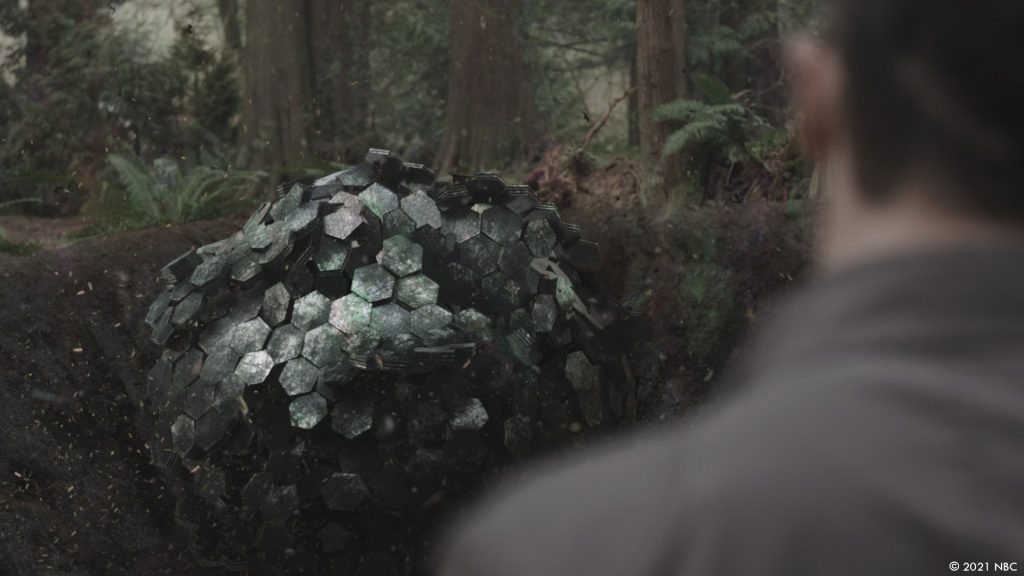
Can you tell us more about the shaders and textures work?
The shader and texture work completed on the pilot was admittedly completed in classic pilot style, a bit run-and-gun. Perfection is the enemy of done, so they say. It was a breath of fresh air when we had the opportunity to dive back in and spend the time required to get a higher quality.
I’m pleased to say that the pilot work conceptually was so strong that our project team could return to it for visual reference. Technically, the shader evolved to incorporate some of the successful forest lighting even when not in the same environment. As a metal surface, some of the brighter spec hits did provide some extra QC work on both the render front and the compositing side of things.
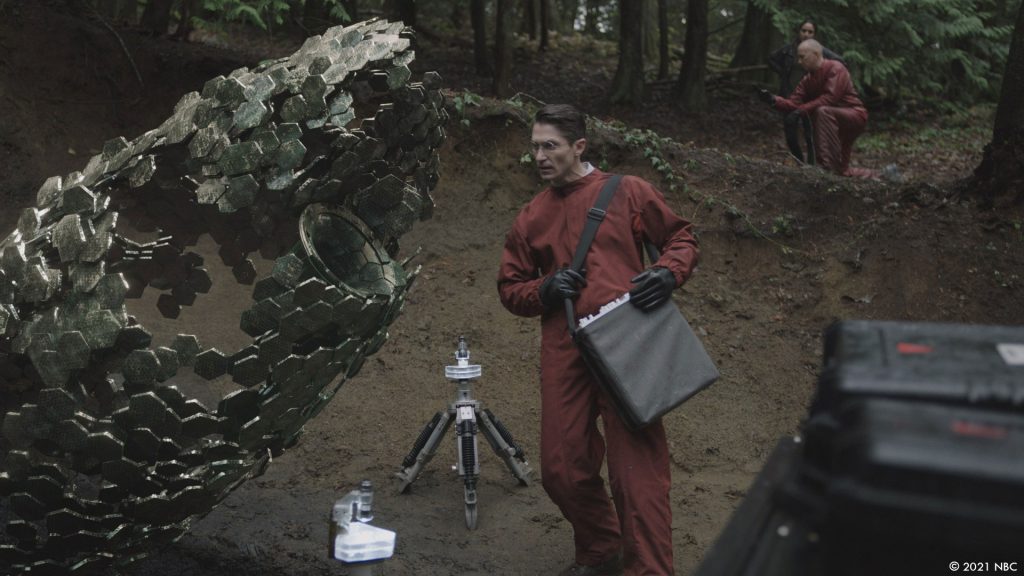
How did you extend the underground secret location?
We started with concept work to get a feel for the walls, ceiling, and layout. We kept getting bigger and bigger to help sell a sense of scale and awe. Much of the hangar architecture is designed to emphasize and highlight the Debris ship. There’s a lot of grey in the shots, and it was imperative that the ship stands out. The pilot shows Maddox driving through the Orbital hangar. These were full greenscreen shots. In some cases, we extended the camera move and in others, the practical move was enough.
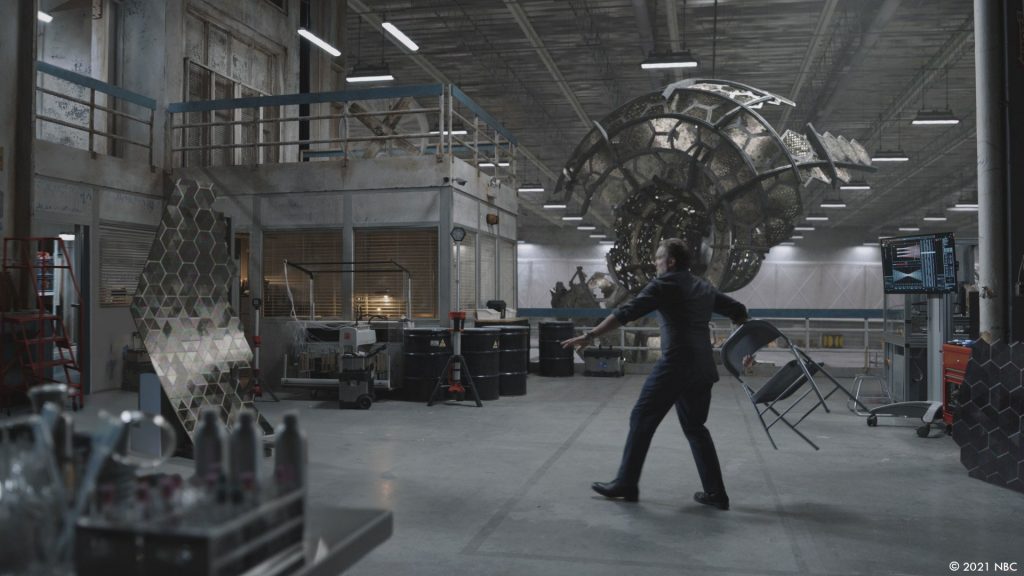
Some of the bad guys can teleport themselves. Can you elaborate about the design and the creation of these effects?
We iterated through a number of different looks. Some had interactive light on the surrounding area, some had more intensity and others had different scales of noise at the leading edge. The design had to tell the story of the teleportation quickly, yet have an organic feel to them. To achieve this, a lot of time couldn’t be spent distorting the surrounding environment heavy-handedly. In the end, colour was one of the main directions after a successful buy off on speed and noise variation.
Can you tell us more about the motion design and holographic work?
We have one shot in the climax of episode 1 in which we see an Orbital scientist testing the Nacho as it gets close to the ship. We had some fun with this one. We were able to leverage some of the 3D builds for wireframe turntables.The main point behind the motion-graphic readouts is to inundate the audience with information.This has the benefit of visual complexity and helps the sci-fi feel immensely.
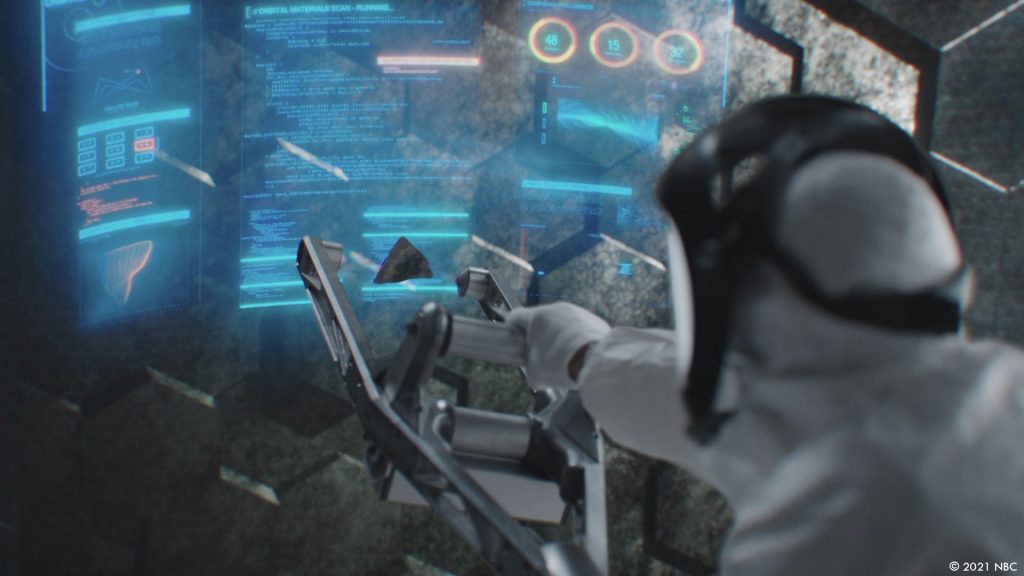
Did you want to reveal any other invisible effects?
There’s some CCTV footage of the maid as she hits the table after falling 14 stories.
This was a full CG digi-double build, complete with rigging, animation, FX integration. We stopped just shy of cloth simulation here, getting away with blend shapes and 2D animated warps. The shot goes by quickly, but it’s so visceral and successful because of it!
Is there something specific that gives you some really short nights?
I can credit our production team here for doing an excellent job planning, our Comp and CG supervisors for executing methodologies effectively and our artists for their time and inspiration. Without these key roles and their commitment to excellence, I imagine we would have had more long days.
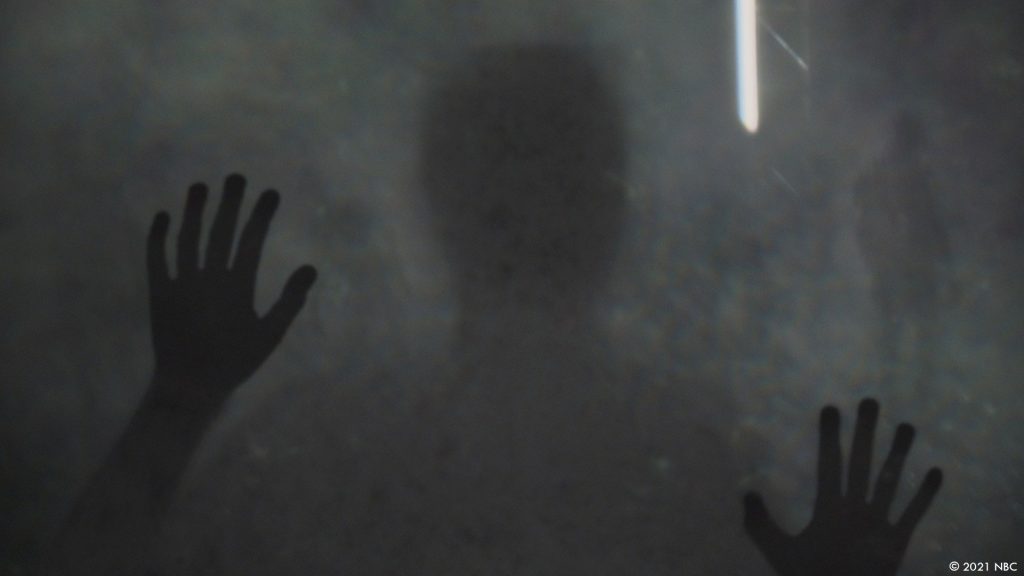
What is your favorite shot or sequence?
Debris has favoured us with some wonderful opportunities to showcase some beautiful VFX. Our dimensional window in episode 3 is one of my favourites, but it’s a close contender with our ship and hangar work.
What is your best memory on this show?
Showcasing our team’s amazing work has been a privilege and will remain my best memory.
How long have you worked on this show?
I’ve worked on this show since March of 2020.
What’s the VFX shots count?
It varies of course but we’ve contributed anywhere from 30 shots to 120 on any one episode.
What was the size of your team?
At our largest, we had a team of about 10 3D artists (trackers, modellers, animators, lighters) and 10 2D artists (concept, DMP, compers). But there are so many others behind the scenes, from IT, to editorial, to production management who all have an important role to play in getting this show done.
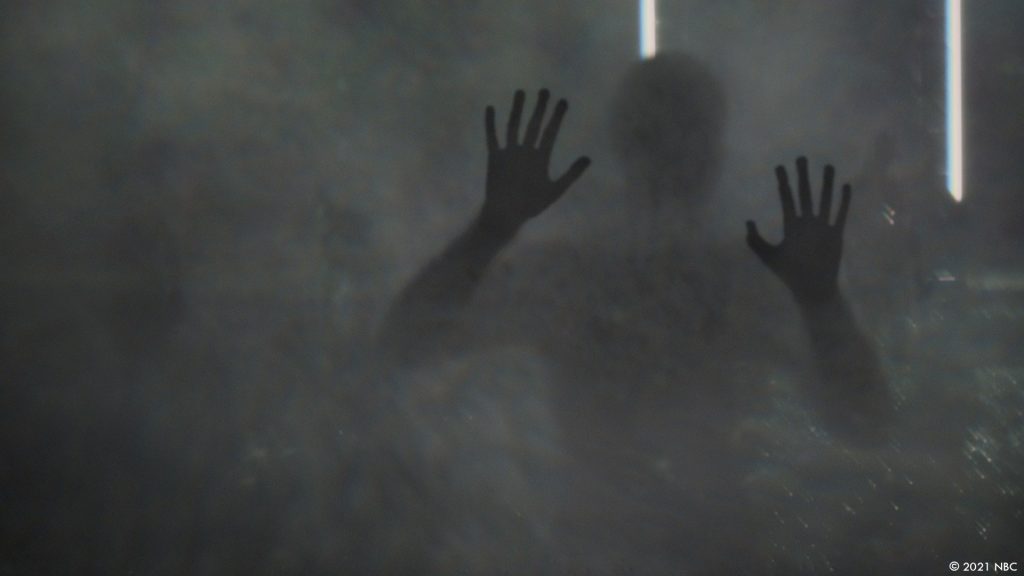
What is your next project?
Not sure at the moment, but in TV, there’s always something coming up fast.
What are the four movies that gave you the passion for cinema?
In terms of VFX, Jurassic Park still astonishes me today, but in terms of my formative years, you can pick any Spielberg film.
In terms of scope, Christopher Nolan’s work is always inspirational, so let’s take Interstellar. Peter Jackson’s Lord of the Rings was ground-breaking as well.
Lastly, I want to include something from before I was around, Chris Marker’s La Jetée, as a reminder of the simplicity of great storytelling.
A big thanks for your time.
// Debris – VFX Breakdown – FuseFX
WANT TO KNOW MORE?
NBC: You can now watch Debris on NBC.
© Vincent Frei – The Art of VFX – 2021